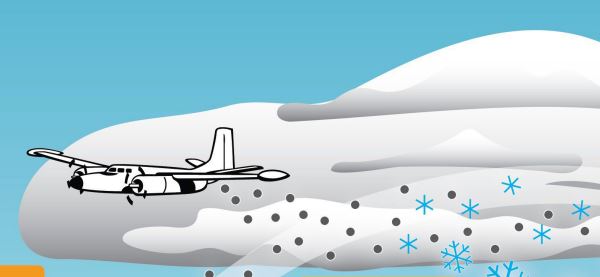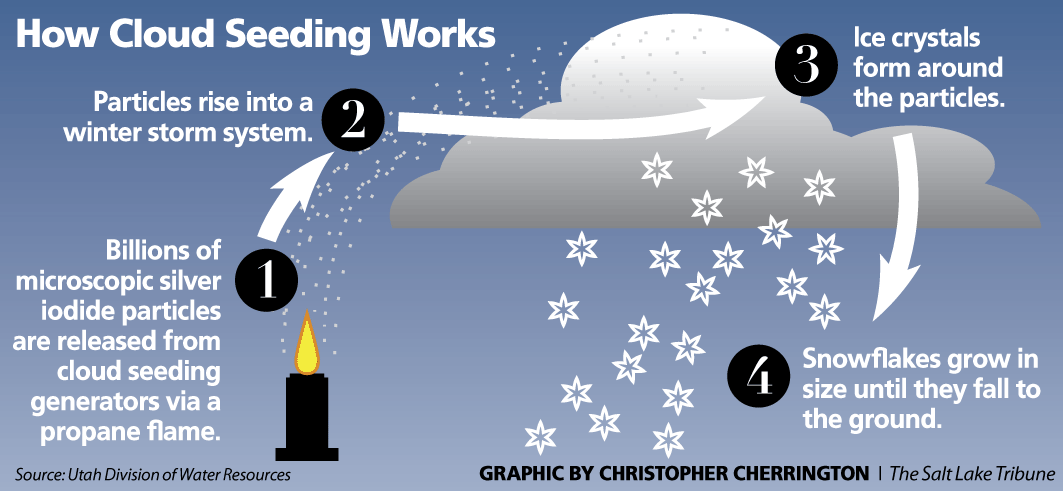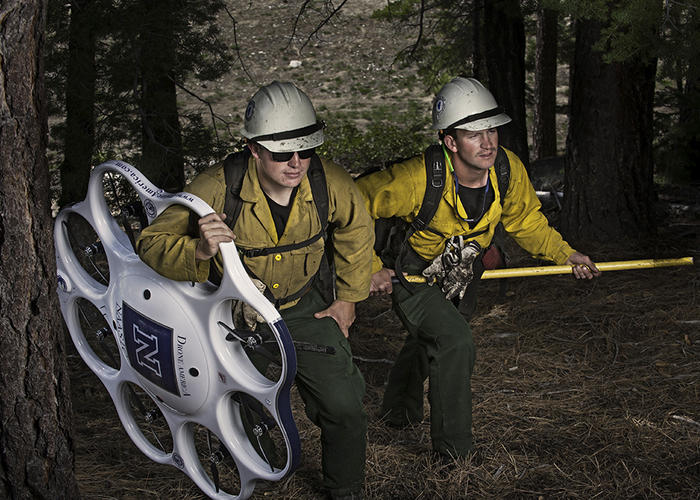Opinion: The nation should follow Utah’s lead. Cloud seeding can make the desert bloom.

A woman uses her hand to tug on the edge of her umbrella as wind, rain and some snow move into the Salt Lake Valley on Tuesday, Dec. 27, 2022. Scott G Winterton, Deseret News

- For over 70 years, Utah has been boosting snowpack with cloud seeding technology.
- Once an intractable phenomenon, precipitation can now be directed by people, at least partially.
- In Utah, cloud seeding is helping significantly, but large regions of the American Southwest continue to suffer from prolonged periods of drought.
Water conservation is important, but it isn’t enough.
- Water supply in the American West is so low that some scientists have suggested retiring two-thirds of agricultural production in the Great Salt Lake Basin to bring the lake back to healthy levels.
- Droughts are diminishing hydropower capacity, and dry conditions are reducing the ability for ecosystems to recover after fires, reducing habitat for wildlife and forage for livestock.

- Arizona, California and Nevada pay upstream Colorado River states — Utah, Wyoming and Colorado — for cloud seeding to increase flows in the river.
- Expanding these programs and developing advanced cloud seeding technologies could further increase river flows and help America’s desert bloom.
But a recent movement in state legislatures has attempted to ban cloud seeding. Last month, the Florida Senate passed a bill that would make cloud seeding illegal, even though cloud seeding isn’t even used in the state. The legislation’s supporters express concerns over the negative health impacts of cloud seeding, in addition to its effects on natural disasters like hurricanes.
Available evidence does not support these concerns. Recent studies show that the current use of silver iodide has no negative health effects. And cloud seeding can’t create hurricanes — natural clouds are needed to do any cloud seeding at all.
This kind of anti-innovation environmental hand-wringing is nothing new. Environmental opposition to nuclear energy stunted the industry in the United States, even though nuclear energy produces no air pollution and is among the safest, least land-intensive sources available. It would be short-sighted to make the same mistake for cloud seeding technology.
Such a misstep would pose a real threat to American sovereignty and leadership. China has invested in cloud seeding activities across the country, using weather modification to reduce droughts, suppress hail and even clear urban pollution. In recent years, China has aimed to create nearly 50 million acre-feet of new precipitation, about 10% of the country’s water consumption. In Xinjiang, officials claim weather modification has reduced hail crop damage by 70%. Because America has relinquished cloud seeding leadership to China, we risk losing advantages in water-intensive industries, whether agriculture or AI development.
Cloud seeding bans in the name of environmentalism would hurt America. The environmental movement has too often been focused on preserving scarce natural resources and skeptical of new technologies. For the sake of our ranchers, public lands, ecosystems and cities, it’s time for a new paradigm focused on creating resources. It’s time to make it rain.





No comments:
Post a Comment